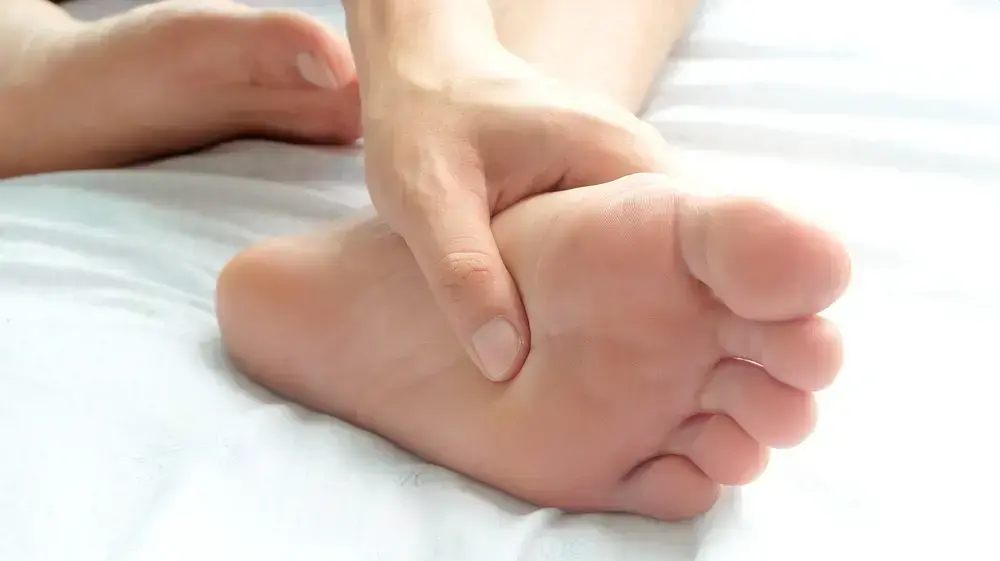It starts with a leg wound and can end in death.
That's how you deal with it
People with diabetes have impaired sensation in distant areas, such as the legs, and so it may happen that they suffer from a small wound without knowing at all - until it gets infected and gets complicated, and gets out of control.
Dr. Daniel Kider explains why it is so dangerous, and how to deal with it
Iris Cole
10/21/2022
Friday, October 21, 2022, 07:50
Share on Facebook
Share on WhatsApp
Share on Twitter
Share by email
Share in general
Comments
Comments
Dr. Daniel Kider explains what diabetic foot is and why it is so dangerous (Walla system)
Diabetics face quite a few difficulties and complications, and one of the most challenging and common difficulties is diabetic foot.
While this phenomenon may sound to many like an unpleasant wound and nothing more, it is actually a dangerous deterioration that is very important to treat.
Dr. Daniel Kider
- a senior physician in the department of plastic surgery at Ichilov Hospital - was a guest on the Expert Clinic podcast to explain why this happens and how it is treated.
Cardiovascular diseases, the kidneys are damaged, and just as importantly: the sensation in distant areas is damaged, for example in the legs," explained Dr. Kider.
And this loss of feeling is very significant.
"When someone has a feeling, they know how to protect their feet from small bruises, we walk on our feet all day and get a bruise here and a bruise there, and at some point it turns into a wound," he explained, clarifying that the wound is not because of the sugar,
This is why people with diabetes are instructed to monitor the condition of their feet and check at the end of each day that they do not have a wound that they did not notice.
Sometimes doctors even suggest to diabetics to ask their partner to look at the foot at the end of the day and feel it.
If one leg is warmer than the other - it is worth checking that there is no infection in the leg.
Once there is a wound, the situation begins to deteriorate
"As soon as there is a wound, from there it starts to deteriorate," said Dr. Kider, "either the wound gets contaminated along the way, or there is an aggravation due to the fact that there are repeated bruises to the wound area, and at some point it gets out of control." It is also important to understand that diabetic patients' wounds heal less well , and there is also a fear that they will not feel the wound at all, and thus will neglect it.
A small wound can cause a big complication.
Diabetic foot (Photo: ShutterStock)
Once the wound becomes contaminated it can be life threatening.
In addition, "to reach a state of healing the wound and recovery of the infectious process, and many times we have to do a lot of small surgeries, and we don't have many reserves in the foot. There is no way to close each wound, and in the end it enters a terrible cycle that when you get to the hospital and have a contaminated diabetic wound, it It usually ends in a very long hospitalization," Dr. Kider explained.
In this hospitalization, a lot of operations are usually performed, the purpose of which is to save life, since there is a danger of sepsis (sepsis), and also to save the leg. Dr. Kider added that even in cases In which the patient can be made to overcome the dangerous infection, sometimes there is no choice and the leg or parts of it have to be amputated.
More in Walla!
This is what you must know before any surgery
To the full article
"I meet the patients who have a significant injury, whose wounds already had to be opened, and are already really worried that they don't know how to close the wound," he said, "We want to maintain the patient's quality of life, make sure that he maintains his mobility and ability to move, And not to cut off the leg."
Dr. Kidder added that diabetic people who undergo amputation of the entire foot often suffer from other diseases, and therefore are not suitable for prostheses, and then they find themselves in a wheelchair or in bed. "When you follow such people, who were active and moved to a wheelchair, within 5 years after the amputation - the majority do not survive, and I'm talking about people in their 50s and 60s," he added.
And this finding is particularly disturbing, since people with diabetes who have to undergo leg amputation are more in danger than people with cancer.
"In cases of bowel cancer or stomach cancer, with the medical treatment that exists today, you can live 5 years after the discovery of the cancer, but if you take people who have had their feet amputated, most of them are not alive after 5 years. If we can save their feet - we will save them." , said Dr. Kidder, "This is where I come in." He added that for him, "Success is to bring a person to the healing of the wound, and to return to walking.
If the wound healed and he didn't walk again, we didn't do anything.
If he can walk - I saved him."
health
Tags
diabetes mellitus










